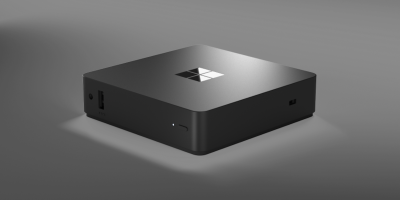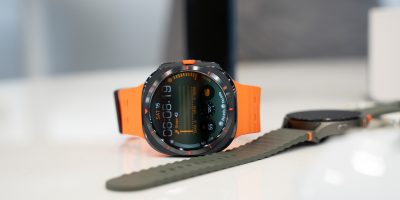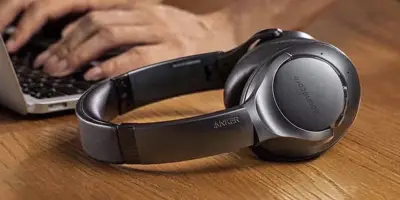Google’s Pixel 6a is only a couple of months away from launching, and as such, a lot of Pixel fans and Android enthusiasts are looking forward to getting their hands on one, and for good reason. Google’s Pixel A-series handsets have always provided great value for money, offering a great set of features that are usually found on higher-end Pixel phones, at a price that’s a bit more wallet-friendly.
With that said, however, last year’s Google Pixel 5a is likewise available, and it also offers a nice list of compelling hardware and software features, making it a reliable Android mid-ranger. In our review, we heralded it as a “new mid-range smartphone king” – but as of 2022, does that title still belong to the 5a? Let’s take a closer look at the two devices, as we compare their strengths and weaknesses.
Processing Power
![]()
Let’s start off with what makes the phones tick – inside the Pixel 6a and 5a are two very different chipsets. The 6a runs on Google’s own custom Tensor chip, the same one found in the flagship Pixel 6 and 6 Pro series. Meanwhile, the 5a comes with the Qualcomm Snapdragon 765G chipset, which is usually found on a variety of mid-range Android phones.
From a performance standpoint, there’s no doubt that Tensor has improved performance when compared to Qualcomm’s mid-range SoC. UI navigation, apps, and games run and load faster on the Tensor, and while the 765G is no slouch as well, it doesn’t exactly fall into “flagship” chip territory like Google’s own SoC.
Perhaps one advantage that the 5a has over the 6a is that the 765G is a tried-and-tested processor, compared to Tensor which is relatively new. The amount of bugs and issues surrounding the Pixel 6 series phones isn’t exactly a secret, and a lot have attributed those performance issues to Tensor and Android 12.
Cameras
![]()
When it comes to camera hardware, both phones have basically the same set of imaging sensors. The Pixel 6a and 5a both have a 12.2MP main camera, which is accompanied by a 12MP ultrawide lens. The phones also feature an 8MP camera on the front for selfies and video calls.
One thing to take note of when using Pixels for camera purposes is that while they are different devices with unique specs, camera performance tends to be similar thanks to Google’s computational photography. Most of the time, Night Sight shots taken on one Pixel phone will have some similarity to those shot on another, and so on. This isn’t to say that all Pixel phones will produce the exact same photos on their cameras, but Google’s camera software optimization no doubt provides an overall uniform mobile photography experience.
However, due to the Pixel 6a being equipped with Tensor, there will most likely be some exclusive camera and photo features which are only possible with Google’s custom chip.
Design and Screen
![]()
Perhaps one area where the two devices differ the most is with the build quality and screen size. The Pixel 5a features the same design which was seen on the Pixel 4a, 4a 5G, and Pixel 5, which had a rounded device design, matte backs, and a physical fingerprint reader. Meanwhile , the upcoming 6a shares the same design language as seen on the Pixel 6 and 6 Pro, with the glossy finish on the rear, a more rectangular design, and an in-display fingerprint reader.
If you prefer the more “modern” design which was first unveiled with the Pixel 6 devices, then the 6a is the device to go for. However, the 5a has some advantages when it comes to the external build. While both devices come with IP67 dust and waterproofing, the 5a actually features a metal unibody, covered by a matte texture. Additionally, it also features a rear-mounted fingerprint sensor, which to be honest is a lot faster and reliable in comparison to the in-display sensors featured on the Pixel 6 and 6 Pro. Of course, we might see some improvements with the in-display sensor on the 6a, but only time will tell.
Additionally, the 5a comes with a 3.5mm headphone jack, which is a rarity these days. With the exception of the 6a, Google’s Pixel A-series handsets have always featured headphone jacks, and it’s a bit sad to see it disappear on this year’s model. If the 3.5mm port is an absolute must-have for you, then the 5a will of course be the phone to go for.
As for display quality, both phones come with OLED panels paired with Gorilla Glass 3 and a 60Hz refresh rate, The main difference is that the 6a will be slightly smaller at 6.1-inches, versus the 6.4-inch screen on the Pixel 5a.
Battery
![]()
In terms of battery capacity, the Pixel 5a packs a slightly larger power unit, coming in at 4,680 mAh. While it doesn’t exactly hit the 5000 mAh sweetspot, it’s a bit larger than the battery on the Pixel 6a, which comes in at 4,410 mAh.
it’s a bit hard to tell at the moment if the Pixel 6a will excel at battery performance, but given that the Pixel 5a features a slightly less-powerful chipset, we can say that it will use up less power and might even out-perform the battery inside the 6a. Only time will tell however, but as far as capacity is concerned, then the 5a definitely has the bigger guns.
Price and Availability
Both phones have the same retail price of $449 in the United States. Of course, with the Pixel 6a nearing launch, Pixel 5a prices are bound to get lower, especially if you look for second-hand options. With that in mind though, both are definitely a lot cheaper than the Pixel 6 and 6 Pro, meaning that you still get value-for-money even if you decide to go with an A-series Pixel handset.
On the other hand though, one disadvantage of the Pixel 5a is that the device only launched in the USA and Japan, meaning that you’ll have to pay for hefty import fees if you’re buying outside the US. The Pixel 6a will be available in more territories in addition to aforementioned regions, like Canada, Australia, the UK, India, and more, which means availability will be less of a problem this time around.
What do you think? Is the newer Pixel 6a the one to get this year, or is last year’s Pixel 5a still a worthy contender? Let us know in the comments below.











Comments